On the occasion of World Water Day, we decided to get back to the origins of the famous “Gaudenzio Fantoli” Hydraulics Laboratory thanks to a trip to the Historical Archives of Politecnico di Milano, where we found the beautiful materials that accompany our story.
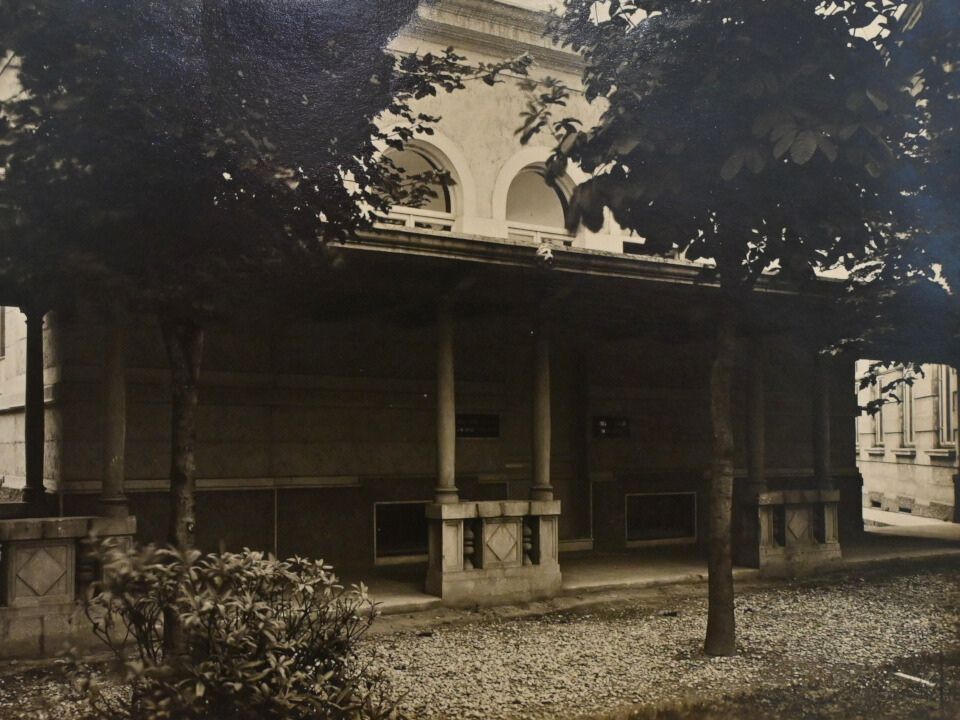
The early days
The study of hydraulics at the Politecnico di Milano has a fascinating history, which has its roots in the beginning of our history.
The Institute of Hydraulics and Hydraulic Constructions dates back to the very early years of what was then called the Regio Istituto Tecnico Superiore (Royal Higher Technical Institute). Here, fundamental teachings regarding the management and conduct of the waters were given. A development that proved crucial in a period of growing interest in applied sciences and engineering techniques, which found in the management of water resources one of their most vital sectors.
In 1933, in an underground room of the Regia Scuola di Ingegneria di Milano (Royal School of Engineering of Milan), a laboratory began to operate with basic equipment for the first experiences.
In particular, this “temporary” laboratory was characterized by a fixed system for the circulation of a modest water flow, a tank open to the floor, a pump that raised the water to a small raised tank at a constant level located in a room on the ground floor, and a pipeline that could feed the experiments through special derivations. Finally, to complete the fixed installation, there was a 4-metre-long glass wall channel with a horizontal bottom, with a rectangular section of variable width up to a maximum of 50 centimetres.
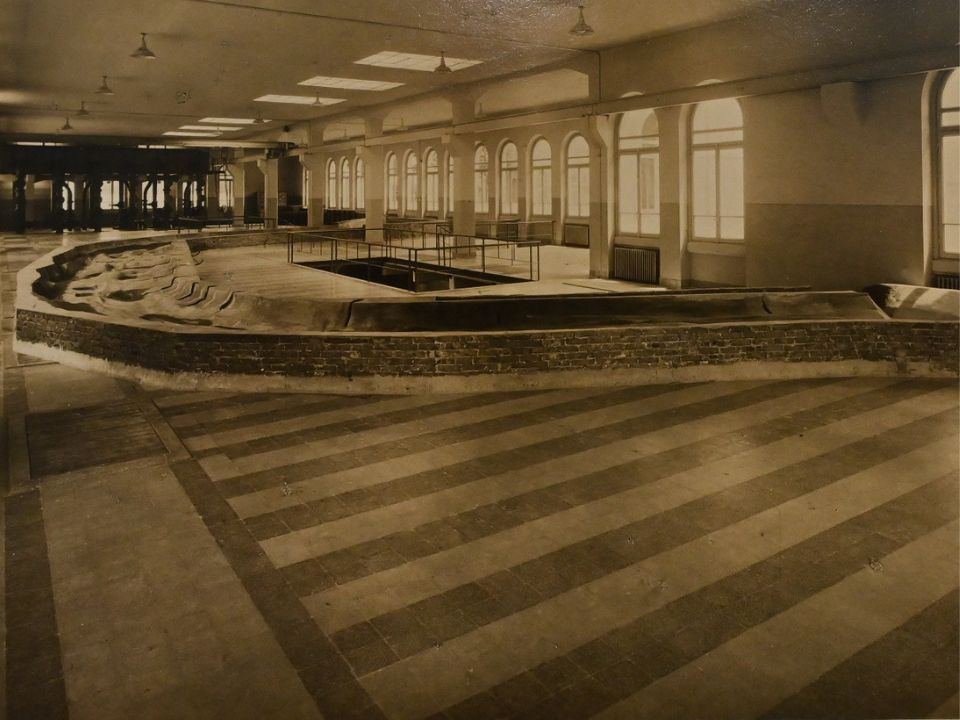
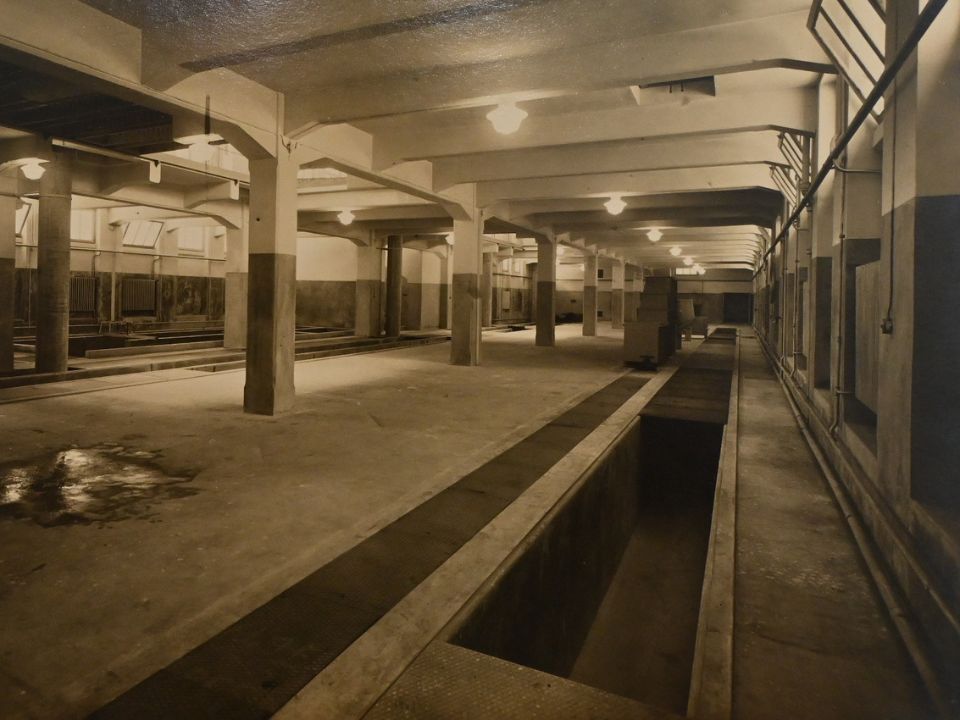
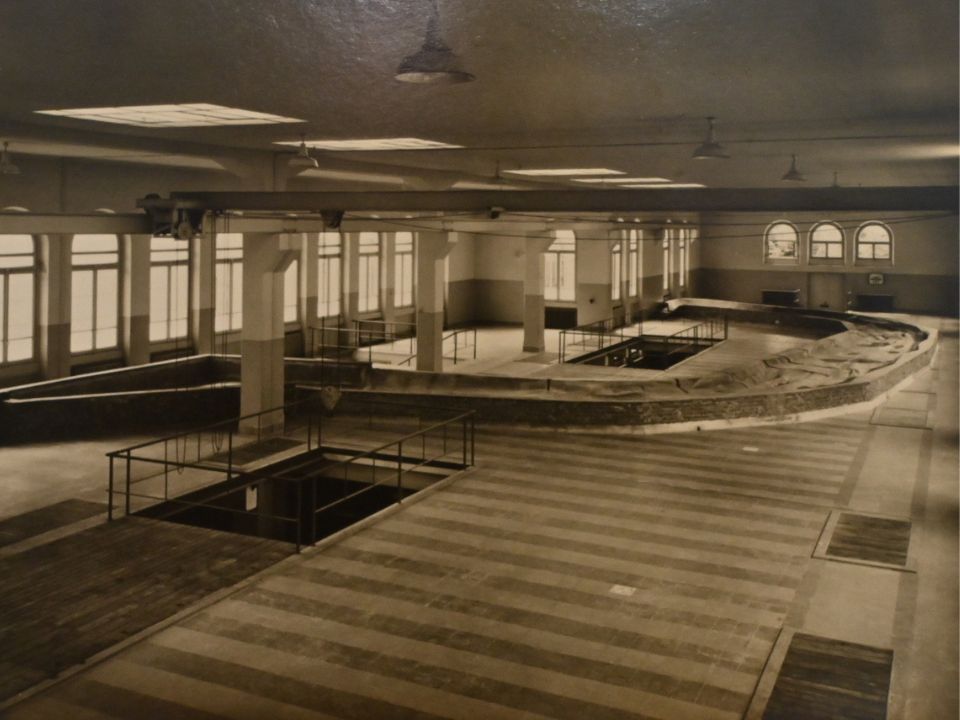
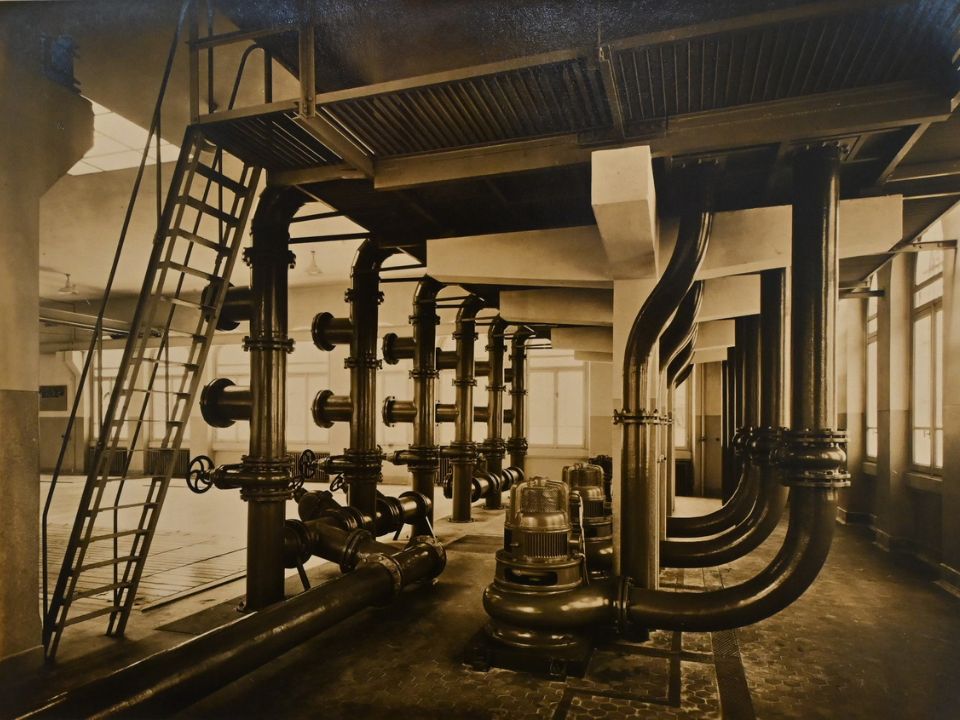
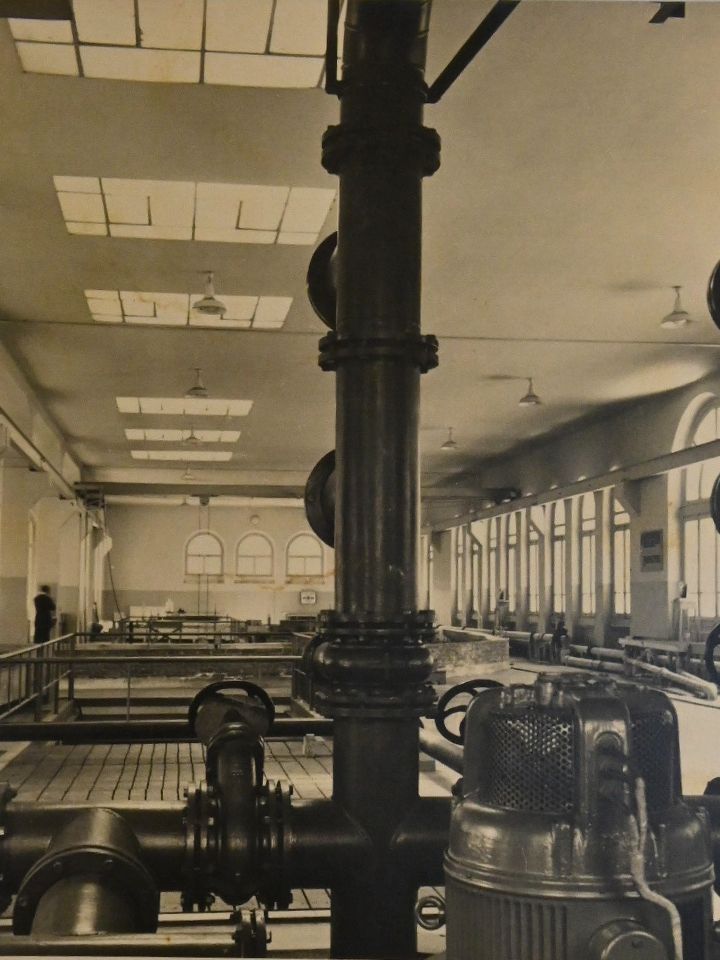
The first research conducted in the laboratory was fundamental for the advancement of knowledge in the hydraulic field. Among the activities carried out, we can mention studies on the standardization of pressure flow measurement devices, research on relief modelers, erosion downstream of sleepers and overflow dams.
The first research conducted in the laboratory was fundamental for the advancement of knowledge in the hydraulic field. Among the activities carried out, we can mention studies on the standardization of pressure flow measurement devices, research on relief modelers, erosion downstream of sleepers and overflow dams.
Who was Gaudenzio Fantoli
Appointed professor of hydraulics in 1925, Gaudenzio Fantoli played a central role in promoting research and teaching of hydraulic sciences. Despite his commitments as Director of the Regio Politecnico (Royal Polytechnic), thanks to the importance and originality of his studies, he was recognized as the authoritative and undisputed Head of the Italian Hydraulic School.
His vision and commitment had led to the creation of the laboratory, which would become a point of reference for the scientific community and for engineers in the sector.
Alongside his scientific activity, Gaudenzio Fantoli carried out important tasks in the field of operating technology, as an advisor and consultant listened to by public administrations and various bodies. Suffice it to recall that he is credited with having promoted the establishment of the National Hydrographic Service, tracing the directives for its organization and drawing attention to the need for a discipline for the construction of large retention dams.
The inauguration of the laboratory
The laboratory had been defined provisional because since its creation there were plans to expand it. After six years, on June 17, 1939, the inauguration of the definitive laboratory was held.
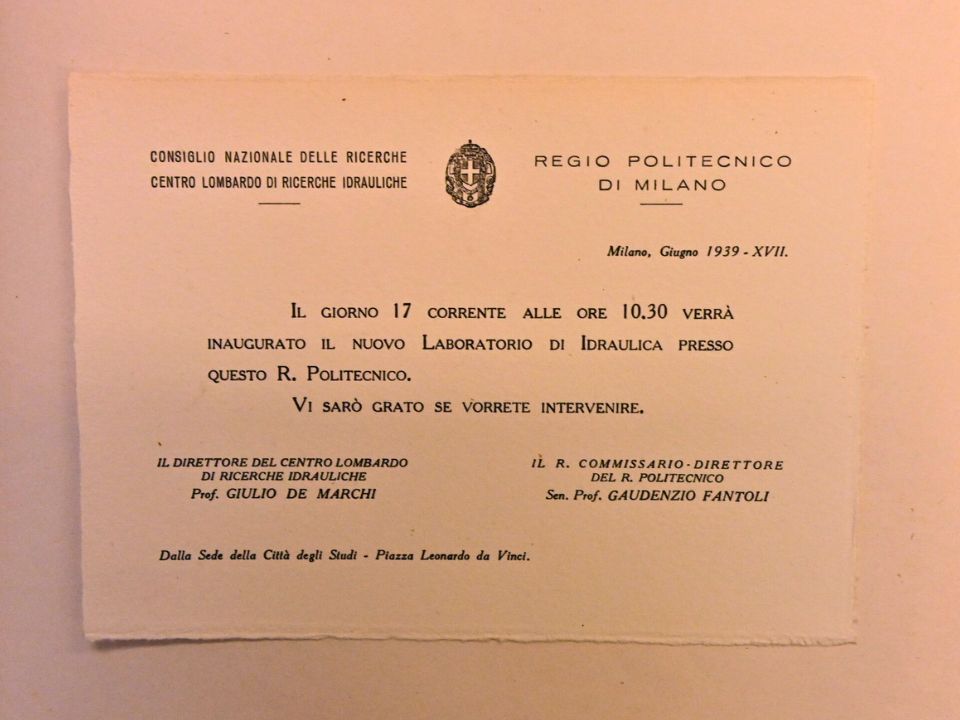
This was not only a new physical space for research, but marked the beginning of a new era for the Institute of Hydraulics and Hydraulic Constructions. Here, theory and practice would come together to generate innovations in the field of water management, constituting the main tool of scientific and technical activity of the Lombard Centre for Hydraulic Research.
The inauguration ceremony took place in the presence of the Board of Directors, the Council of Professors of the Politecnico and the Steering Committee of the Lombard Centre, the result of the collaboration between the CNR (National Research Council) and our university. The participation of academic and scientific authorities underlined the importance of this event.
The laboratory was named after Gaudenzio Fantoli in recognition of his valuable contribution to hydraulic science. Thanks to initial funding from the CNR and subsequent contributions from Fondazione Politecnica, as well as from local authorities and companies, it was possible to create this structure, destined to become a centre of excellence for research.
What it was like
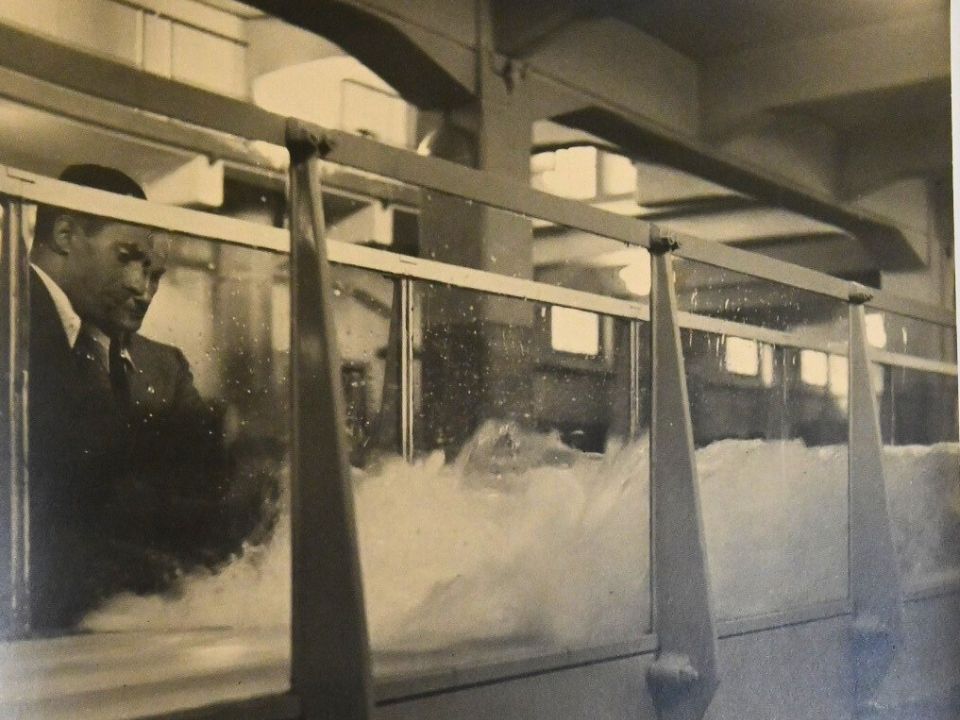
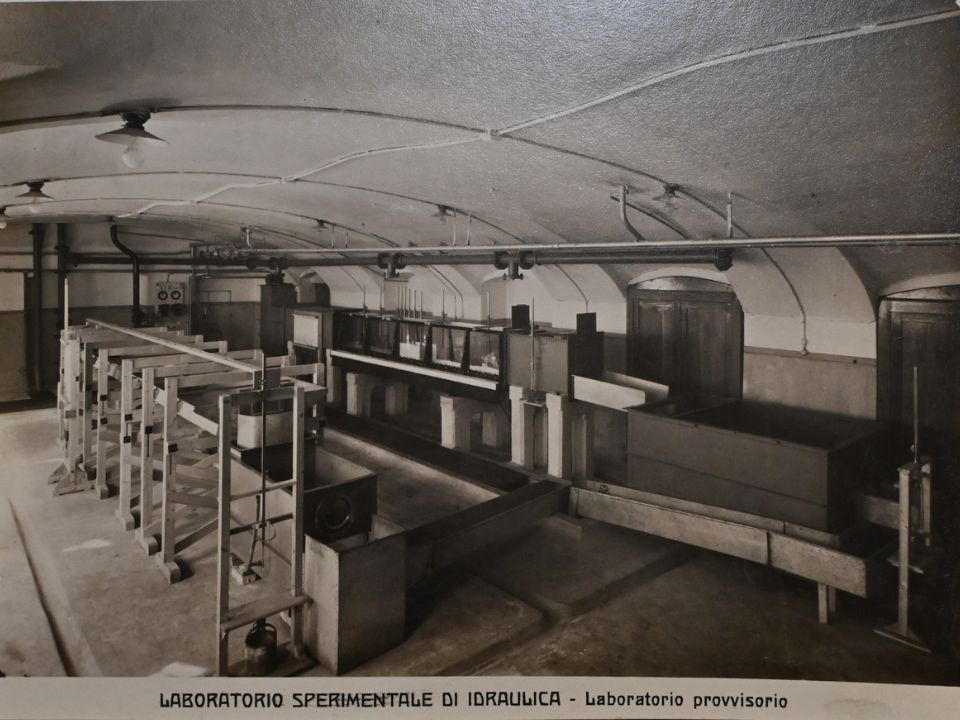

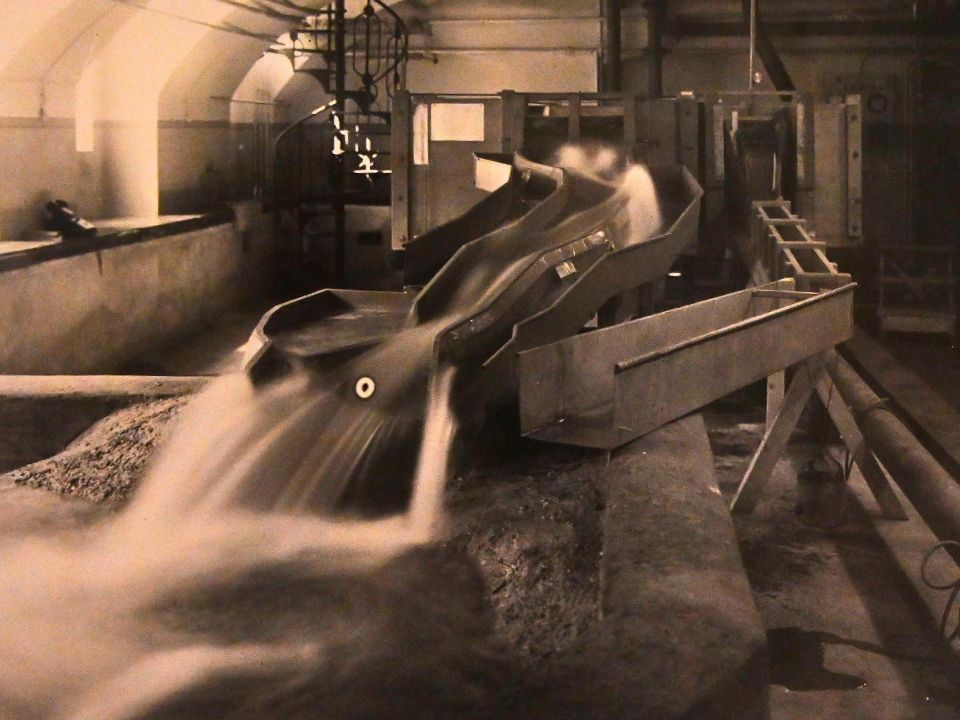
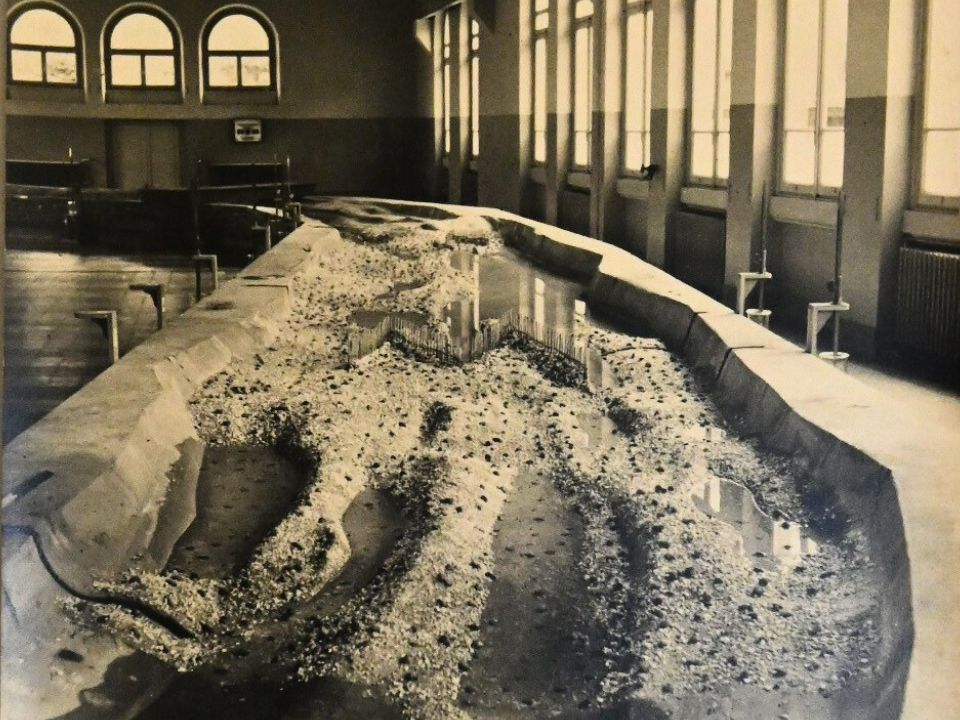
For a few more years, the two laboratories, connected to each other by an underground passage, worked in parallel. Subsequently, all the experimental research was transferred to the new one, and the former was transformed into a carpentry workshop, equipped for the construction of models of hydraulic works intended for testing. The offices of the Institute moved to a larger location on the upper floor, and in the rooms that remained empty a small mechanical workshop was set up and the storage of scientific equipment was organized.
At its inauguration, the Fantoli laboratory consisted of two large halls: one located in the basement and the other on the mezzanine floor, for a total internal length of 57 metres, of which 50 metres were useful for experimental installations.
In 1956, the construction of an elevation allowed a third hall on the first floor, of equivalent dimensions to the previous ones, but without internal structures, thus making it ideal for hosting the huge models typical of river hydraulics.
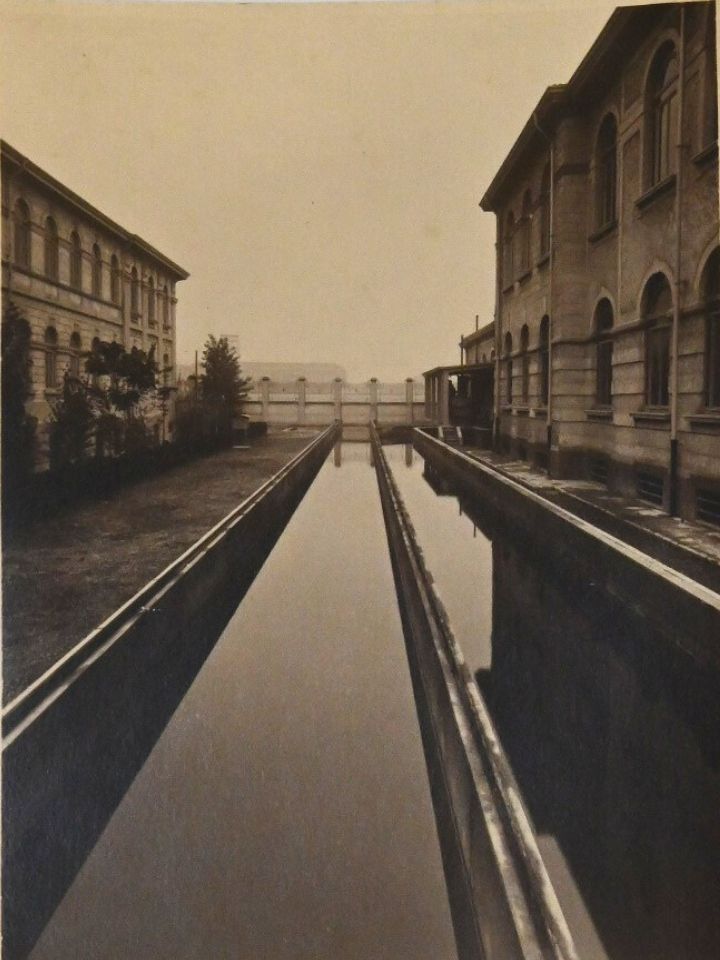
What it is like now
Over the years, the laboratory has undergone significant expansions, transforming itself into a centre of excellence for research and innovation in the field of hydraulics. Today the laboratory is part of the Department of Civil and Environmental Engineering and is directed by Professor Stefano Malavasi.
It currently has a total area of 2,400 square meters, enriched by large openings in the intermediate floors of the three halls, which allow the installation of models of considerable height. Even the permanent installations, designed to ensure the recirculation of the water necessary for the experiences, have been expanded over time to meet the growing needs of scientific research.
The Fantoli laboratory is not only a research centre, but has established itself as a training and innovation centre, where new generations of engineers explore the wonders of hydraulics. The dedication to Gaudenzio Fantoli remains a beacon of inspiration, a reminder of the importance of commitment to scientific research and education, which can truly transform society and improve the management of water resources.
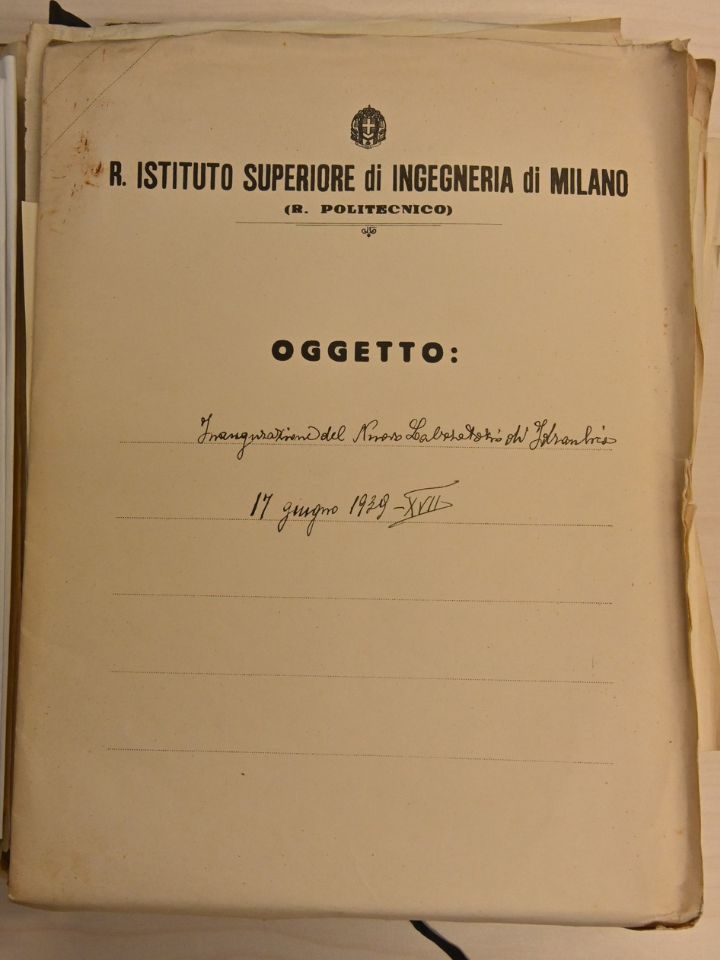
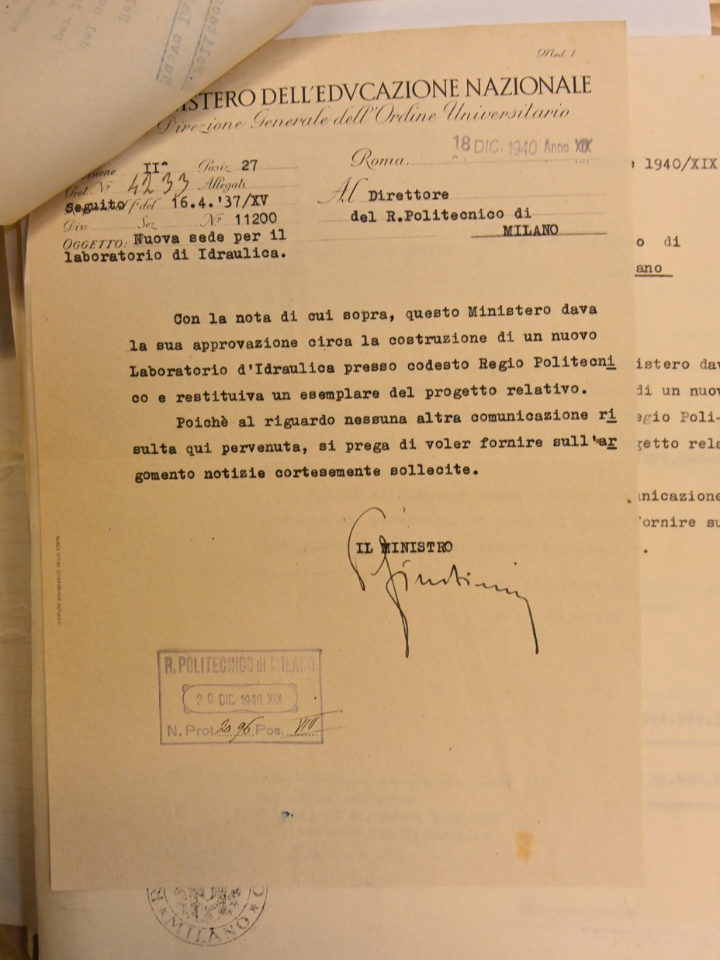
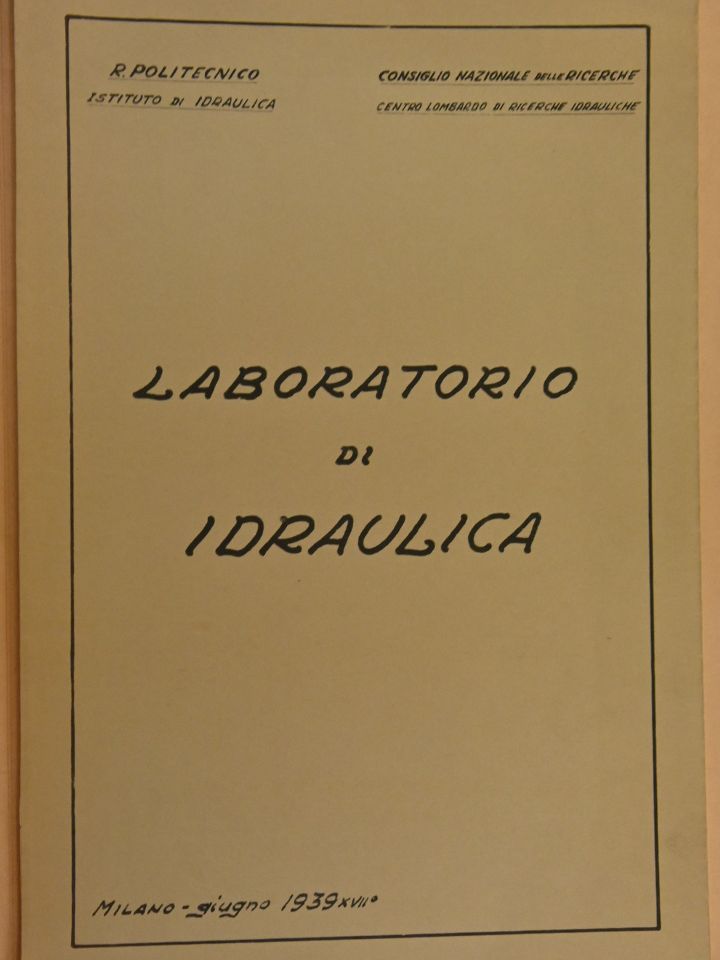
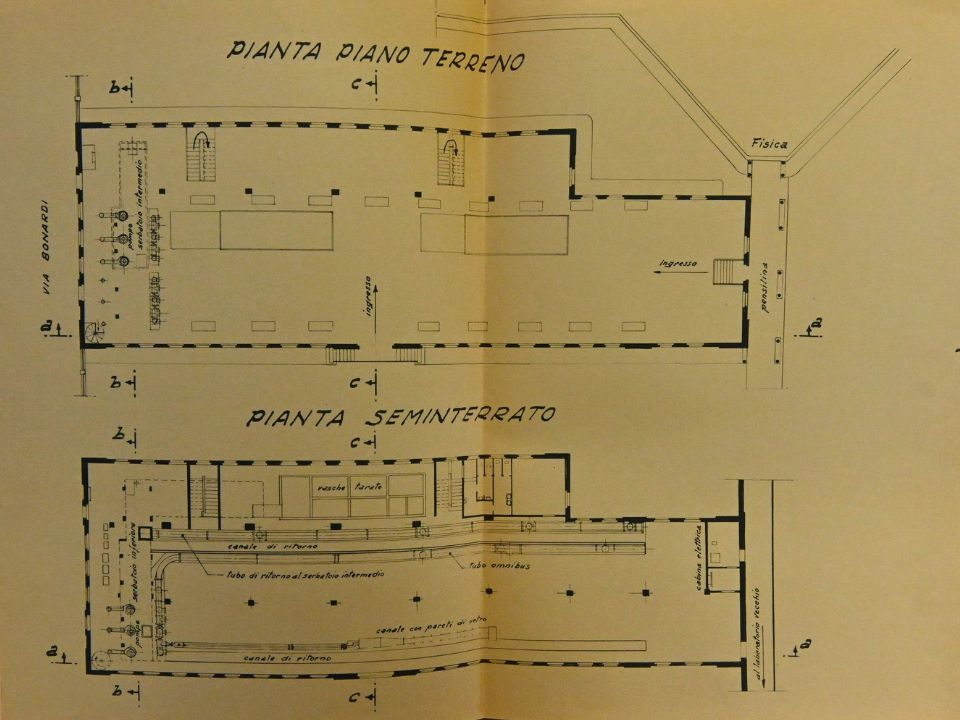
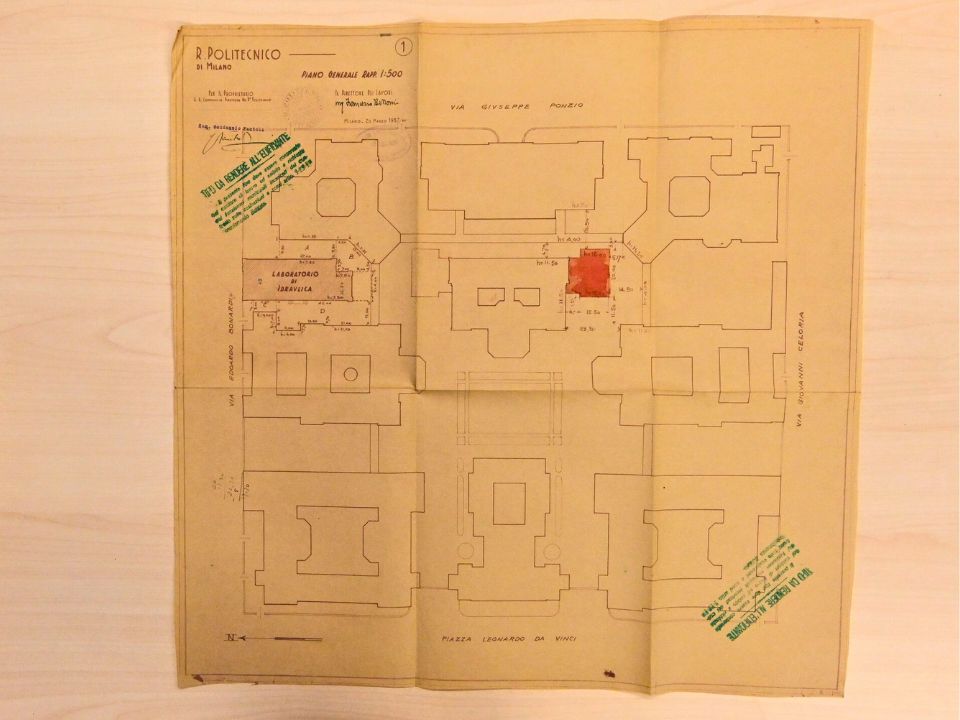
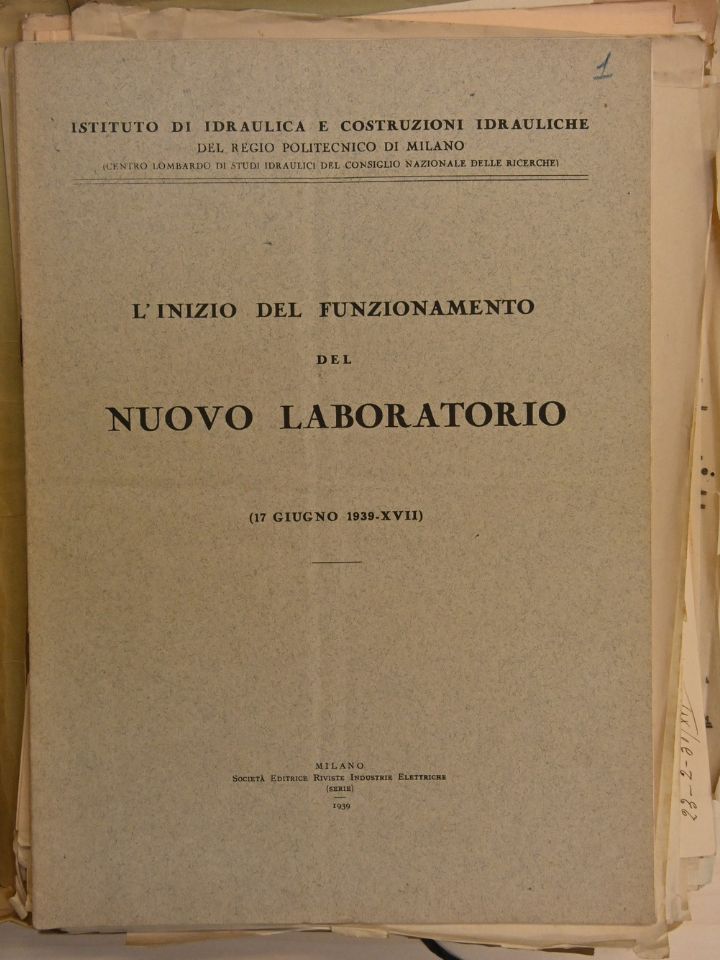
The current headquarters includes, in addition to the G. Fantoli laboratory, a workshop for the construction of models, a small mechanical workshop, storage spaces and an area dedicated to offices, which also houses the Fantoli Library, a precious legacy of the illustrious founder.
This milestone in the history of hydraulics and hydraulic constructions within the historic campus is a symbol of continuous evolution and constant commitment to scientific research and technological innovation, which continues to characterize the activity of the Politecnico di Milano.
